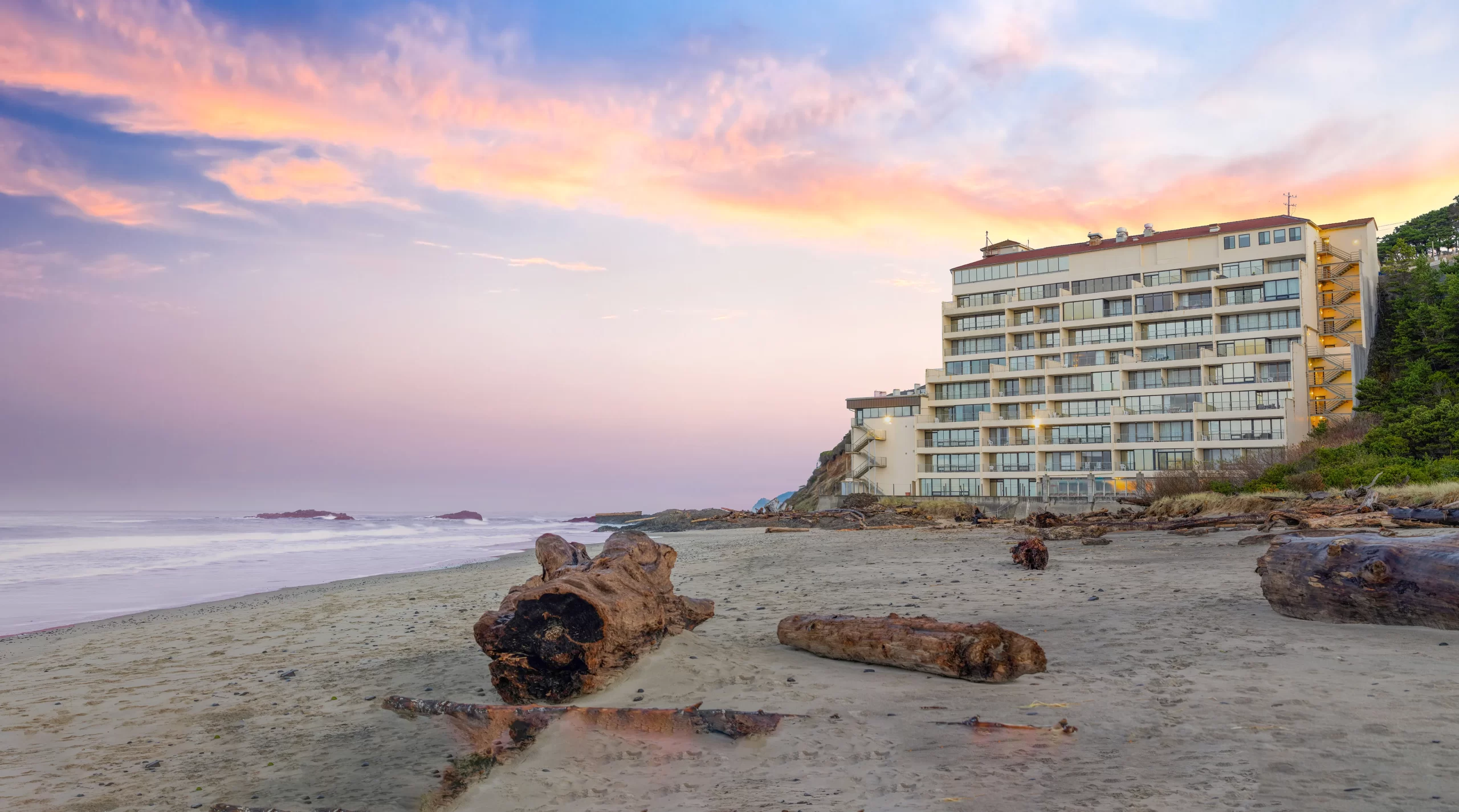
Beachcombing and Beyond in Lincoln City: Rocks, Whales, and Hidden Treasures
Beachcombing
If you’re looking for one of the best beachcombing experiences in Oregon, Lincoln City should be at the top of your list. This coastal town is a patchwork of sandy beaches, rocky outcrops, tidepools, and hidden coves. Whether you're into hunting for agates, photographing driftwood, whale watching, or trying your luck at finding a handblown glass float, there’s a beach here for you.
Beachcombing is more than a casual stroll; perhaps a meditative search for treasures shaped by tide and time. Lincoln City has become renowned for its diverse mix of geology, marine life, and shoreline finds, offering a unique range of beachcombing opportunities for both beginners and seasoned collectors.
Lincoln City isn’t just scenic, it’s full of surprises. From the dramatic cliffs of Roads End to the calm clamming flats at Siletz Bay, every beach has its own unique personality. And because the town is compact and accessible, it’s easy to explore multiple beaches in a single trip.
The Beach Just Outside Your Door
One of the most distinctive features of beachcombing in Lincoln City is how easily accessible the shoreline is, especially around the Spanish Head area. Right outside the hotel, the beach stretches for miles in both directions, offering ever-changing terrain that shifts with the tides and seasons.
To the north, you’ll find Nelscott Beach and eventually reach NW 15th and D River Wayside, where gravel beds are rich in agates and polished stones. This stretch is perfect for long walks, especially in the morning when the beach is freshly swept by the tide.
To the south, the beach curves gently toward Taft and Siletz Bay. Here, large driftwood piles collect, tidepools dot the shoreline, and low tide reveals vast mudflats ideal for clamming. It’s a quieter part of town where you’re more likely to spot wildlife and maybe even a glass float hiding in plain sight. Staying near Spanish Head gives you direct access to this entire range. You can start each day with a beach walk in either direction, never having to drive or search for parking. For beachcombers, that kind of convenience makes a difference.
Lincoln City Beaches Worth Roaming
Spanish Head Beach
Taft District and Siletz Bay
Roads End State Recreation Site
NW 15th Street Beach Access
D River State Recreation Site
Nelscott Beach
When the Tide Is Low, Go
Beachcombing is all about timing. The best discoveries often show up during low tide, when more of the beach and gravel beds are exposed. Aim to get out there within two hours before or after the official low tide mark.
Even better? Plan your trip around neap tides, which happen during the first and third quarter moon phases. During neap tides, the difference between high and low tide is smaller. That means longer low tides, calmer surf, and better access to gravel beds where agates and other treasures can be found. These are ideal conditions for rockhounds and float hunters alike.
Clamming is also best during these extremely low tides. At Siletz Bay, entire stretches of mudflat open up, making it one of Oregon’s best spots for recreational clamming. Bring a shellfish license or join one of the free guided clamming experiences offered by the city.
When to go? Use our live tide chart to plan your outings below:
Taft, Siletz Bay, OR
Sunday, October 26
High Tides
- 4:49 AM 4.78 ft
- 3:04 PM 6.02 ft
Low Tides
- 9:41 AM 2.87 ft
- 11:01 PM 0.25 ft
Monday, October 27
High Tides
- 5:51 AM 4.62 ft
- 3:47 PM 5.74 ft
Low Tides
- 10:28 AM 3.03 ft
- 11:56 PM 0.39 ft
Tuesday, October 28
High Tides
- 7:00 AM 4.60 ft
- 4:44 PM 5.44 ft
Low Tides
- 11:35 AM 3.12 ft
Wednesday, October 29
High Tides
- 8:02 AM 4.74 ft
- 5:59 PM 5.19 ft
Low Tides
- 12:56 AM 0.48 ft
- 1:05 PM 3.03 ft
Thursday, October 30
High Tides
- 8:48 AM 5.01 ft
- 7:24 PM 5.07 ft
Low Tides
- 1:57 AM 0.51 ft
- 2:30 PM 2.69 ft
Friday, October 31
High Tides
- 9:24 AM 5.41 ft
- 8:43 PM 5.13 ft
Low Tides
- 2:52 AM 0.53 ft
- 3:36 PM 2.12 ft
Saturday, November 1
High Tides
- 9:56 AM 5.89 ft
- 9:53 PM 5.31 ft
Low Tides
- 3:41 AM 0.60 ft
- 4:30 PM 1.41 ft
Sunday, November 2
High Tides
- 9:27 AM 6.45 ft
- 9:55 PM 5.55 ft
Low Tides
- 3:26 AM 0.74 ft
- 4:17 PM 0.62 ft
What’s Beneath Your Feet: The Geology Behind the Beauty
Lincoln City’s beaches are beautiful, but there’s more to them than scenic views. They’re part of a larger geological story millions of years in the making. Much of the coast here is shaped by volcanic basalt flows from the Columbia River Basalt Group, which formed dramatic headlands, cliffs, and tidepools. Over time, erosion and the relentless action of the tides have worn down these rocks, revealing gravel beds rich in semiprecious stones.
Agates, jasper, petrified wood, and other stones found on Lincoln City’s beaches are the result of centuries of tumbling, smoothing, and polishing. Many of these rocks originate from inland areas and are transported to the coast by rivers, landslides, and longshore drift. Storms and King Tides help stir up the sand, uncovering gravel beds and making rockhounding especially productive in winter and early spring.
If you’re interested in geology, take time to look closely at the formations around Roads End or the cliffs near Spanish Head. You’ll notice layers of rock, hints of ancient lava flows, and even fossilized plant life embedded in the sandstone.
Lincoln City’s Glass Float Treasure Hunt: Finders Keepers
Every year, Lincoln City, Oregon, transforms beachcombing into a magical treasure hunt with its beloved Finders Keepers float drop program. From mid-October through Memorial Day, thousands of hand-blown glass floats, each one a one-of-a-kind piece of coastal art, are hidden along seven scenic miles of public beach. The best part is that if you find one, it is yours to keep.
Initially inspired by the glass fishing floats that once drifted ashore from Japanese fishing nets, the program launched in 1999 and has since become a cherished tradition for locals and visitors alike. With its 25th anniversary in 2025, this year’s hunt promises to be bigger and more colorful than ever.
Whether you are a devoted beachcomber or a casual wanderer, the thrill of spotting a sparkling glass orb tucked into the driftwood makes every beach walk a little more magical.
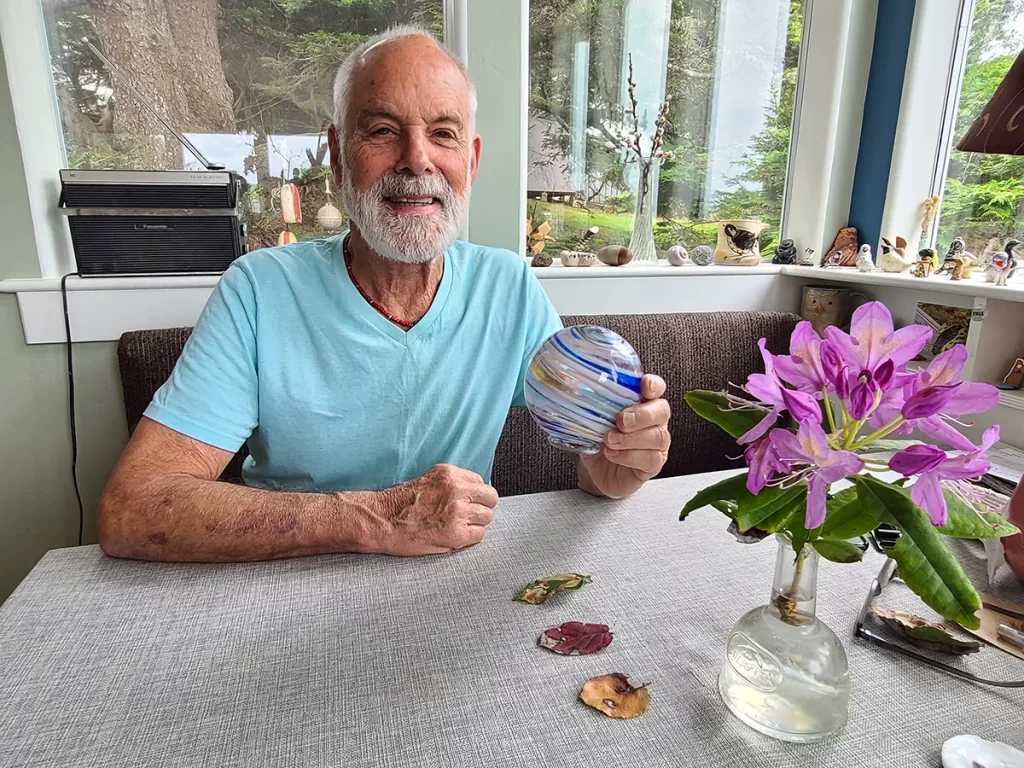
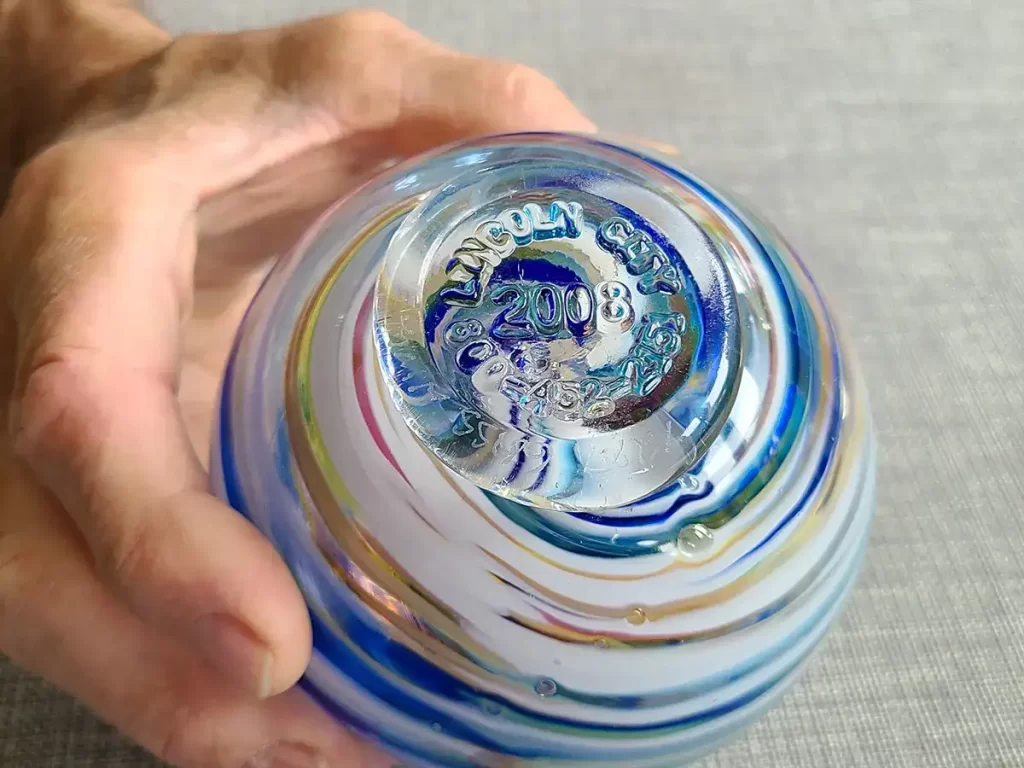
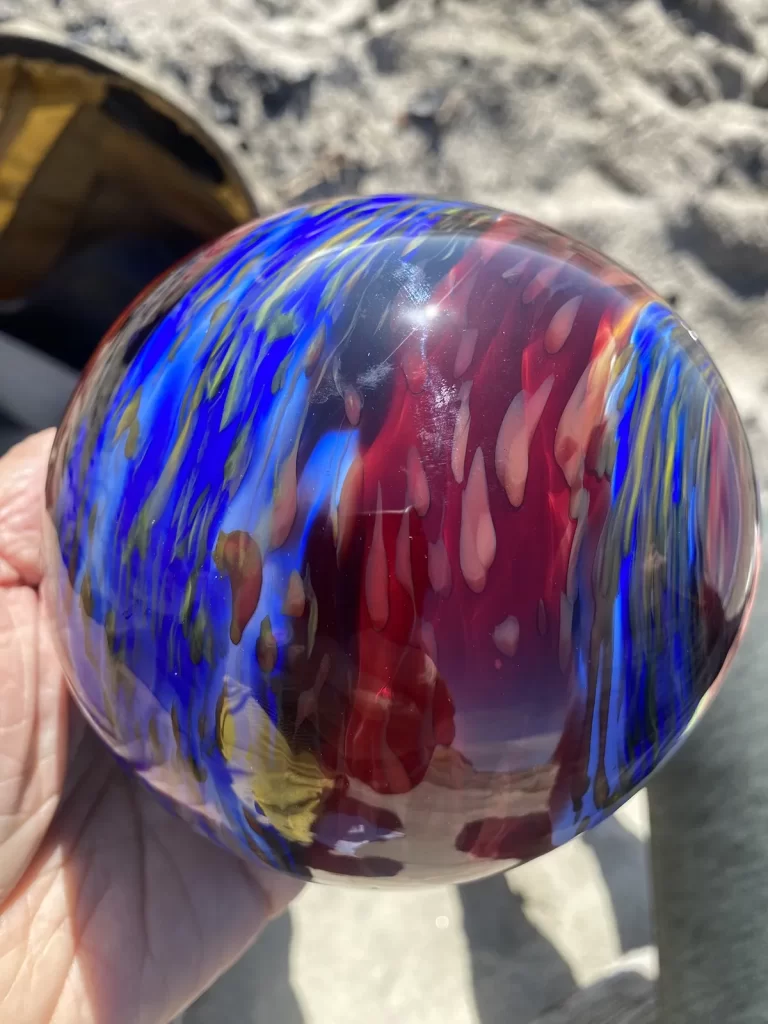
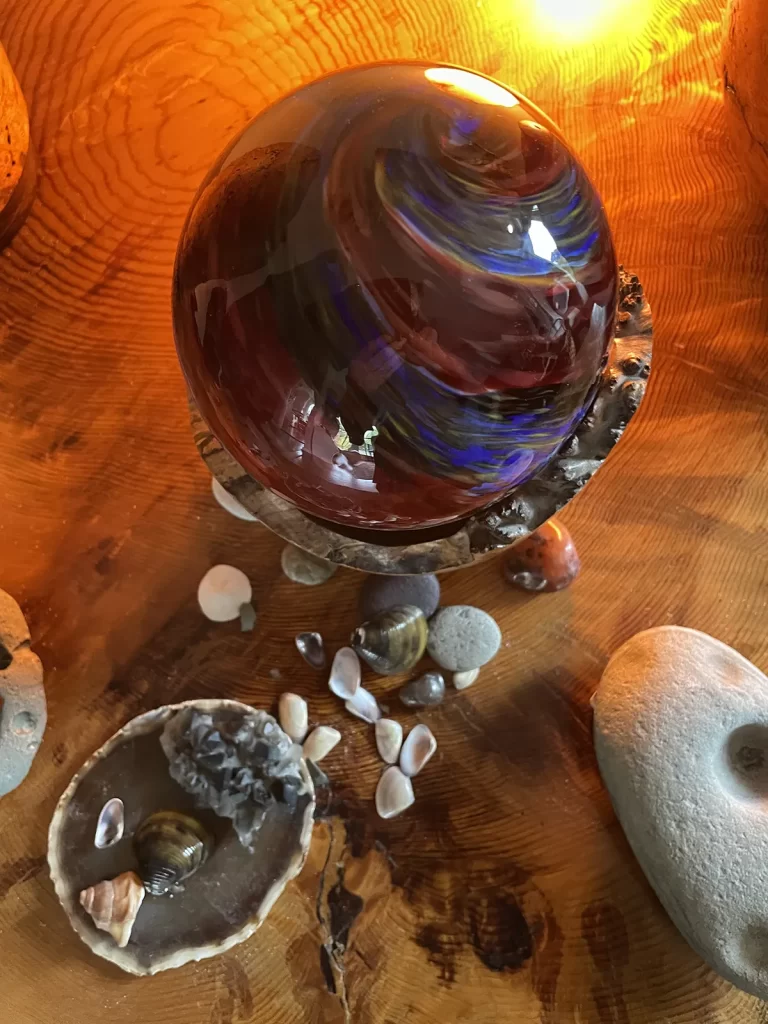
How It Works
Each day during the float drop season, typically from mid-October through Memorial Day, volunteers known as “Float Fairies” hide beautiful glass floats during daylight hours. These floats are placed above the high tide line and below the beach embankment. They are never placed in dunes, cliff edges, or on private property.
Each float is a unique creation crafted by local artisans. You might find traditional globe shapes, swirling colors, or special themed designs. If you're lucky enough to find one, it's yours to keep. However, you are encouraged to register it on the official website to receive a Certificate of Authenticity and learn more about the artist who made your treasure.
You can register your float here: ExploreLincolnCity.com
Tips for Finding Your Float
If you want to increase your chances of finding a float, here are some helpful tips:
Go early in the morning when tides are lower and there are fewer footprints. Look in the correct area, which is above the high tide line and below the embankment. Never search in dunes or on private property. Be patient. You may not find a float every time, but the search is part of the fun. Do not forget to register your float online using the code found on its tag.
Where to Stay: Direct Beach Access at The Inn at Spanish Head
Planning a float-hunting getaway? The Inn at Spanish Head is a perfect home base. If you are staying as a guest, you will enjoy direct and easy access to the beach. This makes it ideal for catching an early morning low tide and increasing your odds of spotting a hidden treasure.
The hotel is perched on the oceanfront and offers panoramic views of the Pacific. It also features Fathoms Restaurant and Bar, making it easy to relax and unwind after a day of adventure.
Don't Miss the Magic
Lincoln City’s Finders Keepers program is not just about finding a float. It is about the joy of discovery, the beauty of the Oregon Coast, and the memories you make along the way. Mark your calendar, plan your visit, and keep your eyes on the sand. Your treasure might be just a few steps away.
Whale Watching Lincoln City
Whale watching is one of Lincoln City’s most cherished experiences, and you don’t even need to leave the comfort of the indoors to enjoy it. During peak migration seasons in winter and spring, you can spot gray whales breaching and spouting just offshore. One of the best viewing spots in town is the Fathoms Restaurant & Bar, perched high above the beach.
It’s not unusual to be mid-bite on your Dungeness crab benedict and suddenly notice a plume of mist rising in the distance. If you're lucky, you might catch a mother and calf slowly moving north together, or a full breach that leaves you staring out at the ocean in stunned silence. The bar is also a fantastic place for whale watching. Grab a cocktail, find a seat facing the windows, and let the waves and wildlife take center stage.
Your Year-Round Whale-Watching Calendar
Gray Whale
Humpback Whale
Killer Whale (Orca)
Blue Whale
Minke & Fin Whales
Best Vantage Points Around Lincoln City
Fathoms Restaurant & Bar (10th floor, The Inn at Spanish Head): Indoor seating and floor-to-ceiling windows offer gorgeous ocean views.
Roads End State Recreation Site: Elevated bluff with vast north-south panorama; excellent for spotting blows against the morning sun.
Boiler Bay Scenic Viewpoint: Rocky Headland, just south of town, whales often feed in the kelp beds below.
Depoe Bay Whale Watching Center (10 min south): Staffed interpreters, loaner binoculars, and whale-spotting updates all day.
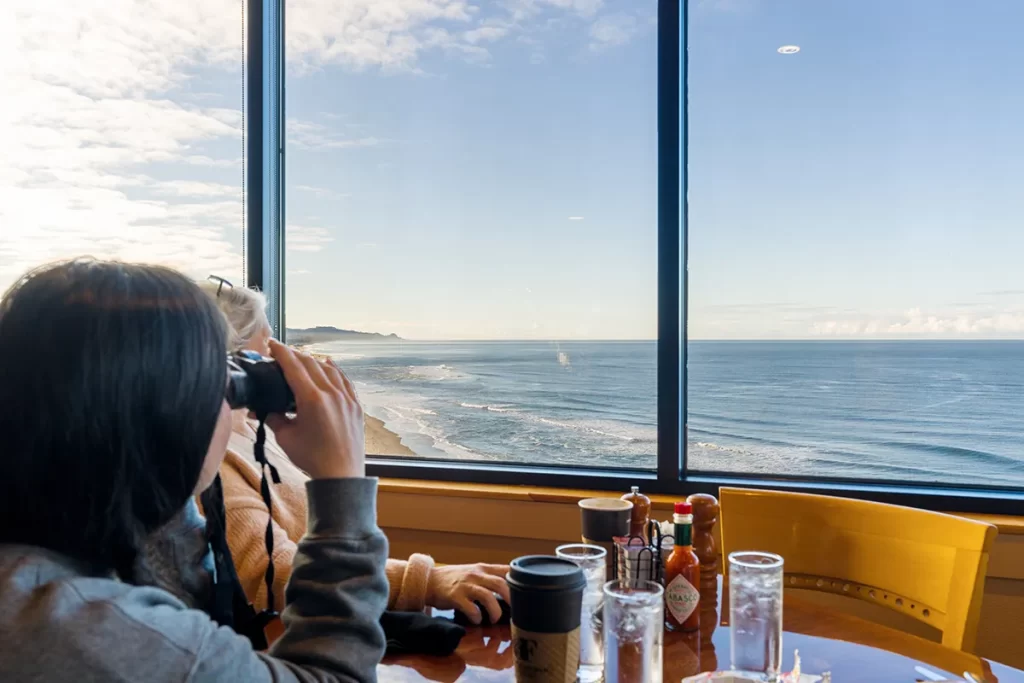
Just keep your binoculars ready!
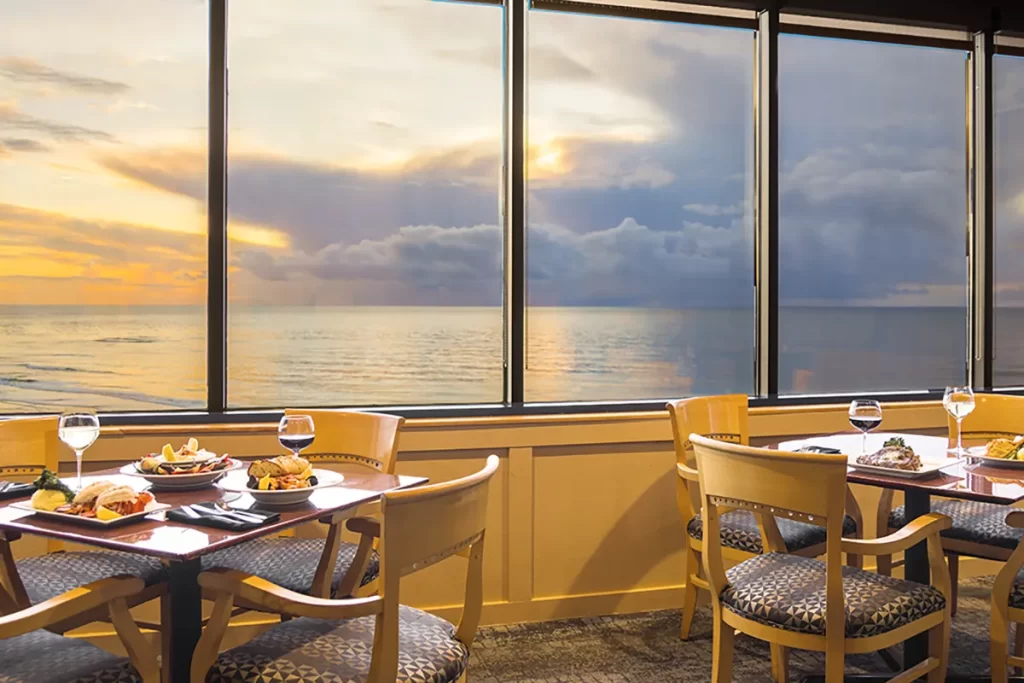
Tips for a Flawless Whale-Watching Day
- Go early. Morning light is softer, winds are lighter, and heat shimmer is minimal.
- Work the horizon. Scan naked-eye for puffs, then lift 8× – 10× binoculars without breaking sight line.
- Mind the weather. Winter storms mean big numbers but poor visibility; calm spring days often deliver closer passes.
- Book a charter for blues or offshore humpbacks. Depoe Bay and Newport boats run longer routes in late summer.
Log your sightings. Share them with the Oregon Parks “Whale Watch Week” volunteers to help with ongoing research.
